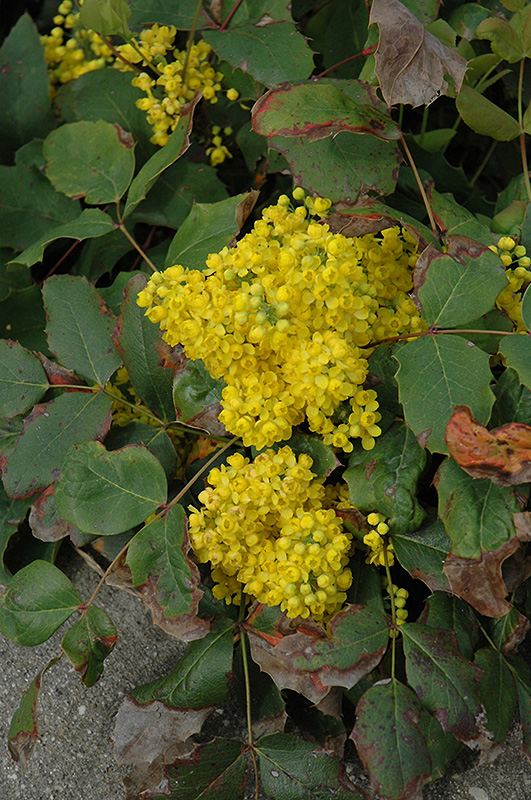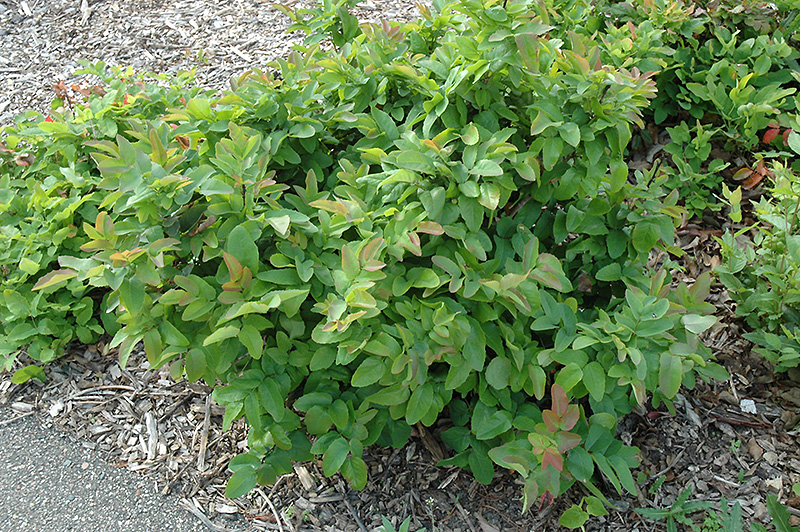Digging deeperPlant Library
Height: 18 inches
Spread: 4 feet
Sunlight:
![]()
![]()
Hardiness Zone: 4
Other Names: Creeping Grape Holly
Description:
A curious evergreen groundcover shrub that spreads by underground runners to fill in an area; clusters of yellow flowers, spiny compound leaves resemble holly and turn purple in fall and through winter; best planted where it will receive some snow cover
Ornamental Features
Creeping Mahonia features showy racemes of fragrant yellow flowers hanging below the branches in mid spring. It has bluish-green evergreen foliage. The spiny pinnately compound leaves turn an outstanding purple in the fall, which persists throughout the winter. It produces black berries from late summer to early fall.
Landscape Attributes
Creeping Mahonia is a multi-stemmed evergreen shrub with a ground-hugging habit of growth. Its average texture blends into the landscape, but can be balanced by one or two finer or coarser trees or shrubs for an effective composition.
This shrub will require occasional maintenance and upkeep, and can be pruned at anytime. Deer don't particularly care for this plant and will usually leave it alone in favor of tastier treats. Gardeners should be aware of the following characteristic(s) that may warrant special consideration;
- Suckering
Creeping Mahonia is recommended for the following landscape applications;
- Mass Planting
- General Garden Use
- Groundcover
- Naturalizing And Woodland Gardens
Planting & Growing
Creeping Mahonia will grow to be about 18 inches tall at maturity, with a spread of 4 feet. It tends to fill out right to the ground and therefore doesn't necessarily require facer plants in front. It grows at a medium rate, and under ideal conditions can be expected to live for approximately 20 years.
This shrub does best in partial shade to shade. It does best in average to evenly moist conditions, but will not tolerate standing water. It is not particular as to soil type or pH. It is somewhat tolerant of urban pollution, and will benefit from being planted in a relatively sheltered location. Consider applying a thick mulch around the root zone in winter to protect it in exposed locations or colder microclimates. This species is native to parts of North America.
A NetPS Plant Finder tool
This Plant Library is for informational purposes only. We may or may not carry the items listed. During many times of the year, we may carry many more plants in our store than are listed in the Plant Library. Please contact us directly at 303-690-4722 or visit our store for current availability and for assistance.

